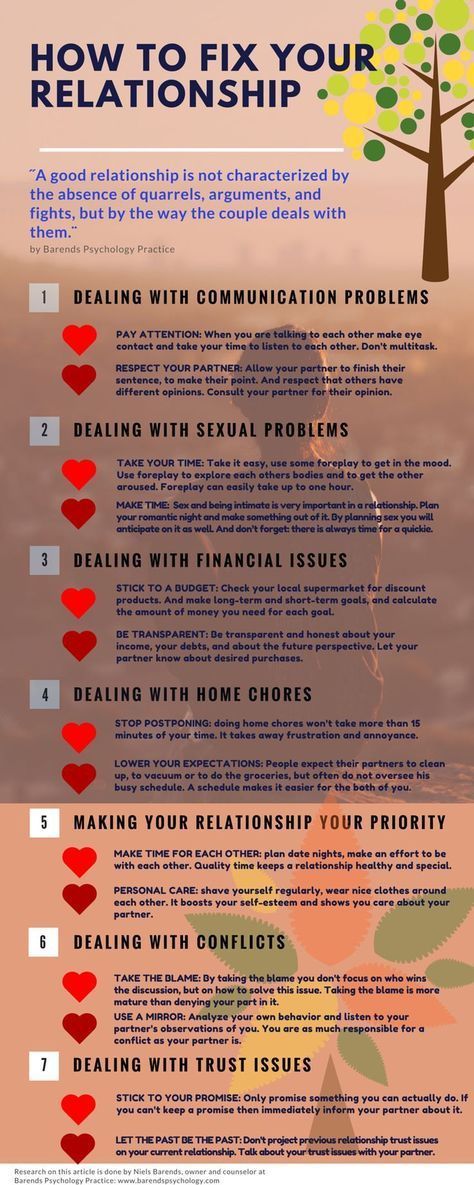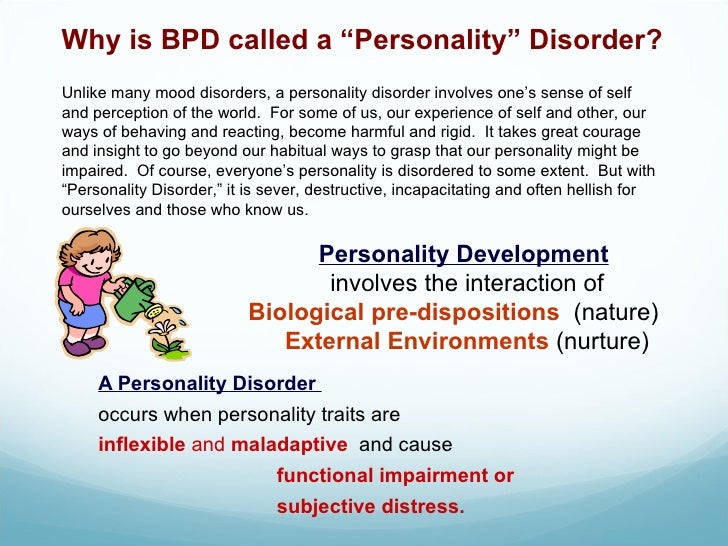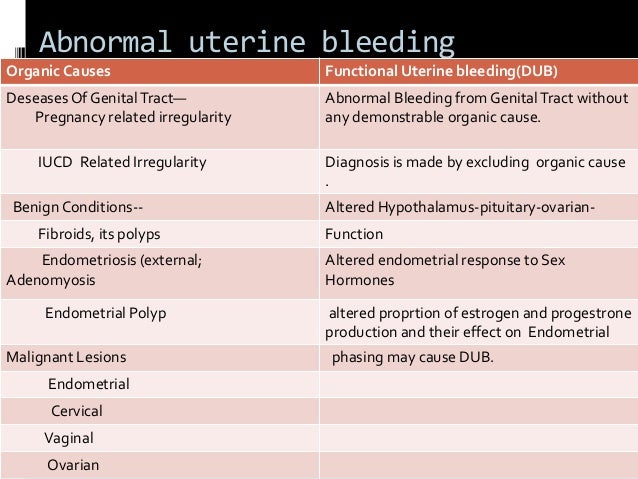Art of detachment
5 Ways To Master The Art Of Detachment
‘Attachment is suffering, connection is blissful.’
If you struggle with letting go of things, you need to know that you are not alone. This could be in form of friendships, jobs, opportunities, people, negative thoughts, or even places. It seems like a huge struggle to let go, and it can break you for months. Attachment issues are dangerous because when, one day, you’re forced to let go, the detachment feels like the separation of your soul from the core of its being.
Connection, on the other hand, is beautiful. Here’s the difference between the two. The attachment has the power to completely take us away from the present. It keeps us either in the past or the future, longing for things to be final or permanent. Connection makes room for the unexpected. Connection is intimate, synced, vulnerable, and present. Attachment is selfish and need-based, while connection is freedom. To me, what is clear is that all forms of attachment stem from an emotional perspective.
The danger with attachment is that when things go in a different way from what you had imagined, it can lead to depression, anxiety, poor self-image, and self-hatred. But perhaps the sign that is most outward and visible is frequent outbursts and erratic behaviours, which stems from the inability to clearly see and understand the world or properly process the behaviour of others or relationships. In some ways, attachment blurs you from the reality of life.
The art of detachment asks for the withdrawal of desire from lesser things and letting them fall away, so as to harness their power to reach the heights of what a human being can attain.
Let’s take a look at various ways to break the cycle of attachment, and how to master the art of detachment:
- Understand the dynamic nature and impermanence of life
Life is naturally dynamic. Very few things last forever, and I believe that is the magic of it. You experience so many different things and get to embody so many different traits that shape you into who you are today. Then the cycle breaks and starts again. Understanding this will help you to detach from ‘lesser things’ and to let them fall away.
Then the cycle breaks and starts again. Understanding this will help you to detach from ‘lesser things’ and to let them fall away.
In an article on Thrive Global, Giang Cao Ho My puts it this way, ‘Look deeply at all that you have. Your body, at first. Is it composed of water that comes from a cloud? Does it contain innumerable beings inside it, from the cells of an apple that you just ate, or the oxygen that you just breathed from a tree? You will realize not only the interconnected nature of all things but also the impermanence.’
- Get busy
One of the main reasons that we get attached is that we feel a void by the absence or lack of the factor in question. How do you deal with that? Get busy! Join a group, or immerse yourself in learning a new hobby or skill. Instead of twiddling your thumbs and throwing pity parties all day and every day, you can learn how to detach emotionally by keeping your mind busy with other thoughts. There is nothing better than improving aspects of yourself while at the same time learning the art of detachment.
- Identify the ego
The word ego is the Latin translation for ‘I.’ Egoism, on the other hand, is the motive to act in one’s self-interest. Someone who is behaving egoistically is simply pursuing his or her own goals, as we all do. In itself, the ego is beautiful because it pushes you to go after your dreams and protect your energy. However, many of our negative emotions come from ego, including emotional attachment. A study published in the Asian Journal of Social Psychology found that high ego development was associated with attachment security.
To identify your ego, you need to reach your higher self. This is generally done through some forms of meditation, particularly mindfulness. It allows you to observe yourself “silently”. You can watch what unfolds and arises from within you, and recognized the “ego” part of it. Identifying the ego makes you see that it is only part of a bigger and universal self. We are then liberated from our fear and insecurity created by our emotional attachment.
Book Review: Ego Is The Enemy By Ryan Holiday
- Exercise
The benefits of exercise are invaluable! Aside from the physical advantages, it helps with mental health too. It’s no wonder some people will say they work out or go to the gym primarily to improve their mental health. Exercise promotes chemicals in the brain that improve your mood and make you more relaxed. Specifically, the brain releases feel-good chemicals called endorphins throughout the body. It builds emotional resilience which translates to physical resilience. In doing so, getting physically strong strengthens your head as well.
What Type Of Exercises Are Right For You?
- Practice self-love
Be kind to yourself. Treat yourself as you would your best friend. Monitor your thoughts and make sure that you speak highly of yourself, inwardly and outwardly. Psychologist Debra Campbell says, “If you’re hard on yourself, ask yourself whether you’d speak to someone else that way. Would it help a child to grow in self-esteem if you spoke to them the way you speak to yourself in your head? If not, think about giving yourself the same level of kindness and compassion you’d give another.”
Would it help a child to grow in self-esteem if you spoke to them the way you speak to yourself in your head? If not, think about giving yourself the same level of kindness and compassion you’d give another.”
Self-love might sound like egotism but in fact, it is the foundation of self-esteem and has knock-on effects in areas as diverse as emotional intelligence and resilience. Self Care: 5 Lessons On Self Love We Should Learn And Implement
‘Detachment is not that you should own nothing. It is that nothing should own you.’
Liked this? You’ll probably find this useful as well – How To Handle Rejection
7 Ways To Become A More Decisive Person
The Art of Detachment | Active Meditation
The Practical Value of Detachment
One of the greatest benefits of detachment is to recognize how much control we have over our thoughts and emotions if we choose to exercise it. At an inner level, with our Higher Self, we can observe our rapid automatic reactions and shifting attitudes as we respond to external situations. This provides us with a conscious mental space to intervene with restraint or by substituting better choices.
This provides us with a conscious mental space to intervene with restraint or by substituting better choices.
This is comparable to being a passenger in a rapidly moving automobile. As we watch the scenery swiftly moving by us, we can observe what is interesting as well as irrelevant. When we want to stop and study some scene more closely, we can.
The use of detachment works the same way to objectively review the stream of thoughts and feelings that move about us. Instead of being immersed in programmed feelings or beliefs (or prejudices and stereotypes), the state of detachment provides the mental space to check for more appropriate views.
Those who practice the mental discipline of detachment often discover how often strong desires, fears, or discouragement control us far more often than we assume. This discovery can lead to opportunities to exert greater discipline to our unruly emotions and the liberation of our common sense.
Detachment also offers the possibility of widening our view of complex situations and memories. By backing away from immediate emotional reactions, it becomes possible to see all the pieces of puzzling events. This is a mental place that allows us to sort out events and place them into a more coherent pattern. In this manner it is possible to recognize important insights we have missed, discover where our anger or fear was triggered, and to identify alternative responses we can make from now on.
By backing away from immediate emotional reactions, it becomes possible to see all the pieces of puzzling events. This is a mental place that allows us to sort out events and place them into a more coherent pattern. In this manner it is possible to recognize important insights we have missed, discover where our anger or fear was triggered, and to identify alternative responses we can make from now on.
Another major benefit of detachment is to become more aware of how often we unwittingly allow our autopilot to control our life. Letting old habits of belief and attitude to operate can be both convenient and effective. However, it can also become too narrow and inappropriate as our life situation changes and we grow in knowledge, skill, and compassion.
There clearly are times when we need to observe more carefully what is occurring in and about us, examine the adequacy or inadequacy of our responses, and develop added insights concerning these situations.
Detachment is a practice that is designed to lift us out of the zone of the ordinary sensations and beliefs about our life – not escape them. They are, after all, the part of our life that is involved with our domestic duties, career, family, and a host of significant engagements that represent the functional part of our life.
They are, after all, the part of our life that is involved with our domestic duties, career, family, and a host of significant engagements that represent the functional part of our life.
The unique benefit of detachment is to enable us to recognize how often we are confined to our routine programmed belief system and habits in a manner that inhibits our growth. When we can observe our self and our stream of thoughts and feelings from a detached perspective, we are more able to perceive fresh insights. This can include a more profound understanding of what is truly most important to us and how we need to adjust our priorities to improve our outcomes.
The Spiritual Value of Detachment
The Art of Detachment benefits us in many important ways. The first is to help us peel back the heavy influence of our standard beliefs and habits based on our material sensations and earthbound expectations. This prepares us to view what is true and valid as opposed to the programmed reactions we have used as the basis of our interpretations and choices of response.
When we seek to know who we are as a spiritual individual, we need the skills of detachment to look behind our usual beliefs, desires, motives, and thoughts to see what actually is there. This is the equivalent of “looking behind the curtain” of our materialistic nature and habits. As this occurs, we can begin to be aware of our Higher Self and its nature. When we explore these possibilities, we will find that our Higher Self contains a purpose, design, and plan for living that is often quite different from our ordinary existence.
It is here in our higher human and Spiritual Self that we find the qualities, wisdom, and strengths that can fill in the weak areas in our personality. Here are the resources we need to heal the areas of discouragement, fear, hostility, and apathy that our personality alone cannot repair. In our Higher Self we can find the meaningful purpose and priorities that bring peace and fulfillment.
Detachment plays a vital role in guiding us to a place in our awareness where we can comfortably relate our material experiences and duties to our innate spiritual nature and qualities. It is here is where we can achieve a working – not passive – relationship with our spiritual possibilities and our Higher Self.
It is here is where we can achieve a working – not passive – relationship with our spiritual possibilities and our Higher Self.
The Role of Detachment in Active Meditation
As we identify more with our Observing Self rather than our reactive or engaging self, we also can become aware of the Life behind our capacity to know, sense, be, choose, respond, or just observe. At this level we can contact our spiritual nature and its insights, qualities, and power.
Detachment is an opportunity to be more objective in our awareness and to visit the Life Essence of who we really are. From there we can engage the wisdom of our Higher Self and the qualities and abilities that reside at this level of awareness. And with persistence, we can develop a working relationship with our Higher Self as a resource for guidance, comfort, renewal, and enlightenment.
The Art of Detachment can open all these doors so we can move into the observing state and bypass our ordinary beliefs and sensations. Then we can more readily explore our higher spiritual potentials and destiny for a meaningful and fulfilling life.
Then we can more readily explore our higher spiritual potentials and destiny for a meaningful and fulfilling life.
Detachment, in this manner, is a vital tool for effective self-examination and for preparing us to seek contact with our core, our Spiritual or Higher Self.
4. Resemblance in detachment. Dialectic of myth
4. Similarity in detachment. dialectic of mythWikiReading
Dialectic of myth
Losev Alexey Fedorovich
Contents
4. Similarity in detachment
Finally, some relative similarity can be found in the common feature of detachment . However, this is precisely the area where mythology and poetry diverge fundamentally and completely, and therefore one must be careful in establishing similarities. There are definitely similarities. Poetry, like art in general, has the character of detachment in the sense that it excites emotions not for things as such, but for their specific meaning and shaping. When fire, murder, etc. are depicted on the theater stage. disaster or crime, we do not rush on the scene to help or avoid disaster, to prevent crime or isolate it. We remain seated in our place, no matter what is depicted on the stage. It's the same with art in general. It lives, indeed, by "disinterested pleasure," and in this Kant is a thousand times right. This, of course, does not in the least resolve or even touch upon the question of the social significance of art. After all, “disinterested enjoyment” can also have social significance. And even the more art separates us from "reality" and "interest", the more often we pay for this art and the more it sometimes plays a public role. But these questions are of no interest to us now. The only important thing is that art and poetry are characterized by a certain0006 detachment , snatching things from the flow of life phenomena and turning them into objects of some special, by no means just vital and worldly interest. Undoubtedly, a certain kind of detachment is also characteristic of mythology.
When fire, murder, etc. are depicted on the theater stage. disaster or crime, we do not rush on the scene to help or avoid disaster, to prevent crime or isolate it. We remain seated in our place, no matter what is depicted on the stage. It's the same with art in general. It lives, indeed, by "disinterested pleasure," and in this Kant is a thousand times right. This, of course, does not in the least resolve or even touch upon the question of the social significance of art. After all, “disinterested enjoyment” can also have social significance. And even the more art separates us from "reality" and "interest", the more often we pay for this art and the more it sometimes plays a public role. But these questions are of no interest to us now. The only important thing is that art and poetry are characterized by a certain0006 detachment , snatching things from the flow of life phenomena and turning them into objects of some special, by no means just vital and worldly interest. Undoubtedly, a certain kind of detachment is also characteristic of mythology. We have already pointed to it. For all its liveliness, visibility, immediacy, even sensuality, the myth is fraught with some kind of detachment, due to which we always separate the myth from everything else and see in it something unusual, contrary to ordinary reality, something unexpected and almost miraculous. It is absolutely impossible to deny the presence of such detachment in myth.
We have already pointed to it. For all its liveliness, visibility, immediacy, even sensuality, the myth is fraught with some kind of detachment, due to which we always separate the myth from everything else and see in it something unusual, contrary to ordinary reality, something unexpected and almost miraculous. It is absolutely impossible to deny the presence of such detachment in myth.
23. Classical and non-classical philosophy: similarities and differences
23. Classical and non-classical philosophy: similarities and differences Classical philosophy is a style of thinking that was formed in the 17th-19th centuries) within the framework of classical rationalism). Non-classical philosophy (modern) - philosophy of the end 19–20th century Classic
50. Culture and civilization: similarities and differences
50. Culture and civilization: similarities and differences In the early stages of social development, a person was merged with that community (genus, community), of which he was a part. Under such conditions, the social and cultural aspects of society were practically not separated: social life
Culture and civilization: similarities and differences In the early stages of social development, a person was merged with that community (genus, community), of which he was a part. Under such conditions, the social and cultural aspects of society were practically not separated: social life
CONTINUED LIKENESS
CONTINUED SIMILARITY "Assimilations do not prove, but only explain what has been proved." M. V. Lomonosov “Everyone is inclined in his own way to compare human life with something. One carpenter, for example, once said: "A man is like a carpenter: a carpenter lives, lives and dies, so does a person."
SIMILARITY OF PROPERTIES AND SIMILARITY OF RELATIONSHIPS
SIMILARITY OF PROPERTIES AND SIMILARITY OF RELATIONSHIPS Analogy is an old concept already known to Greek science and medieval thought. And already in antiquity it was noticed that not only objects, but also
SIMILARITY DIFFERENT
SIMILARITY There are an infinite number of similar things in the world. Abstractly speaking, with the desire and sufficient imagination, one can find a similarity between any two arbitrarily taken objects. Neighborhood in space in which nature has placed two
Abstractly speaking, with the desire and sufficient imagination, one can find a similarity between any two arbitrarily taken objects. Neighborhood in space in which nature has placed two
1. Similarity to previous theories
1. Similarities to previous theories In order to judge this similarity, it is necessary to recall what we said above about the most recent and most significant significance of nature and art for ancient thinking. As we have seen, nature in her latest
2. Similarity in the field of intellectuals
2. Similarity in the field of intelligentsia Further, mythology and poetry are equally intellectual, i.e., it is not only expression, but also animated, spiritualized expression. Every poetic form is always something spiritualized; it is life visible from within. AT
3.
 Similarity in terms of immediacy
Similarity in terms of immediacy 3. Similarity in terms of immediacy Further, both poetic and mythical being are immediate, non-inferential being. Image and <to> poetry and mythology does not need any logical system, any science, philosophy or theory in general. He is visual and
5. The deepest divergence in the nature of detachment
5. The deepest divergence in the nature of detachment But it is precisely in the sphere of detachment that the main grandiose difference between mythology and poetry takes place. Neither the expressiveness of form, nor intelligence, nor direct visibility, nor, finally, detachment, taken themselves according to
8. Principle of mythic detachment:
8. The principle of mythical detachment: We already know this and now only remembered it. What follows from this for the structure of mythical detachment or mythically detached layer in any other structure
What follows from this for the structure of mythical detachment or mythically detached layer in any other structure
1. The most common similarities and differences between mythology and religion
1. The most common similarities and differences between mythology and religion The divergence of the two spheres will become clearer if their similarities are taken into account. The indisputable similarity of mythology and religion lies in the fact that both these spheres are spheres of personal existence. Regarding religion, there is not
Freud and Lorenz: similarities and differences
Freud and Lorenz: similarities and differences The relationship between Freud's and Lorenz's theories is quite complex. They are united by the hydraulic concept of aggressiveness, although they explain the reasons for the latter in different ways. In other respects, their views sometimes seem diametrically
In other respects, their views sometimes seem diametrically
III. BEHAVIORISM AND INSTINCTIVISM: SIMILARITIES AND DIFFERENCES[72]
III. BEHAVIORISM AND INSTINCTIVISM: SIMILARITIES AND DIFFERENCES[72] similarities According to instinctivists, a person lives in the past of his kind, while behaviorists believe that a person lives in the present day of his society. The first is a machine that contains
§ 5. Monadology of Kant and Leibniz, their difference and similarity, their fallacy
§ 5. Monadology of Kant and Leibniz, their difference and similarity, their fallacy There are two views on monads, which from the first > views seem to be absolutely opposite, but in reality they have something in common, and, moreover, in essence. According to one
WISDOM OF DETENTION
WISDOM OF DETENTION So be prudent and watchful in your prayers. Wed 1 Peter 4:7 On Pentecost we celebrate the sending down of the Holy Spirit, which was revealed to the disciples in a special way. This was necessary for them, for they stood at the very beginning and a new life began in them,
Wed 1 Peter 4:7 On Pentecost we celebrate the sending down of the Holy Spirit, which was revealed to the disciples in a special way. This was necessary for them, for they stood at the very beginning and a new life began in them,
8 worldly dharmas, art of detachment and impermanence / culture
8 worldly dharmas refer to these blockages, worries or attachments it is a cloud of our consciousness and ability to be happy. Thus Buddhism, like psychology itself, reminds us that the fact of life, clinging to certain dimensions, such as pride, material possessions, or the pursuit of profit, pushes us into an existence of deprivation and suffering.
that Buddhism is a house full of beautiful treasures.. However, from our apparently Western vision, it often happens that we do not know how to distinguish or appreciate the beauty of those riches that come together in this philosophical and spiritual framework. .
.
The principles of Buddhism and the practice of Dharma are not easy to implement, and the reason for this lies in our mentality, in the culture in which we live daily and which somehow ultimately shapes us.
“Dharma is the discipline of living in truth; it's not knowing or reading the truth, it's not commenting or discussing, it's not your logic, it's not your reasoning." we know nothing about the subject of the chakras, about meditation or the supposed life energy contained in kundalini yoga.. Those practices that many people master with little or no knowledge don't matter if you don't know the 8 worldly dharmas first.
Because immersion in oneself, differentiation and work on this complex of problems is, without a doubt, the first step towards our spiritual awakening. This is the threshold of Buddhism, it is able to get rid of our obsessive thoughts and social desires and leave behind our eternal fear of loss.
Our fixation on profit, on meaningless attachment ...
The eight worldly dharmas speak to us over all two concepts: detachment and lack of constancy. These ideas, these concepts are undoubtedly our true enemy, the shadow that haunts us and which we never finish seeing or recognizing. Thus, there are many of us in our mentality and behavior, which direct our existence in relation to certain dimensions, needs, people and materials that we consider necessary for well-being..
We live tied to all these dimensions, not understanding, not realizing that nothing in this world can be saved forever.. In our daily life, there are certainties, attachments and expectations, because all this gives us a feeling of control. And if there is one thing that we like, it is to control everything. However, there is nothing more changeable, capricious and immanent than life itself.
Therefore, any change will destabilize us. All these variations, unfortunate expectations or unfulfilled goals lead us to suffering and stress.
For Dharma, As long as our minds are polluted by these eight worldly principles, we will never be free or noble . So let's see what dimensions this structure of Buddhism belongs to.
First pair: attachment to material possessions / aversion to not receiving them or being separated from them
8 worldly dharmas are established in 4 pairs of attachment and aversion . So the first one refers to something that we will be very familiar with. We are talking, of course, about our need to possess and the fear that arises from thinking about distance or damage, which we understand as ours. Thousands of examples illustrate this: our attachment to technology, to certain brands of clothing, shoes, our cars, etc.
It is clear that many of these things we consider necessary for our daily life: they serve us for work and for giving a certain image. however, the problem is to experience obvious suffering when we do not have access to these objects, when we lack and feel our absolute dependence on them.
This is undoubtedly a very relevant worldly dharma in which to work.
Second pair: attachment to recognition, approval and fame / aversion to censorship or disapproval
Everyone, in some way, needs to feel verified, accepted, and approved by others. We are social beings, and these security connections allow us to develop with greater ease. Now the problem, as always, arises when this need becomes a priority and permanent. When we cannot live without this external reinforcement, without this praise, without this permission, without this as in our photos, without the permission of our families, partners or colleagues.
Not knowing or not being able to live without these reinforcements, or experiencing blockages or anxiety when they condemn or disapprove, is another absolute source of suffering. Another pillar of the 8 worldly dharmas that we are required to identify and change.
Third pair: attachment to a good reputation / aversion to a bad image
What does it mean to live in a good or bad reputation? This basically means that we are not free, unable to act, feel, live and relax in accordance with our desires.
. Because one who knows what others think or what others may infer about our appearance, actions, or words, has a total veto over our personal growth. This is not appropriate.
“When you do what you love with passion, without getting any retribution, and you lose the concept of time… When you do it for the simple fact that you are happy doing it and you also serve others , it happens when you are in the Dharma.”
-Yogi Bhajan-
Fourth pair: attachment to the pleasures of the five senses / aversion to unpleasant experiences
Maybe this pair of the eight worldly dharmas gives us a certain contradiction. What is wrong if we direct our existence towards those five senses with which we taste life in all its forms, flavors and sensations? Even more... why not dislike what is unpleasant or uncomfortable?
To understand this, we must put ourselves in the context of Buddhism. In this vision, where the humble, the humble, and the just feed every behavior, there is no room for excess.















